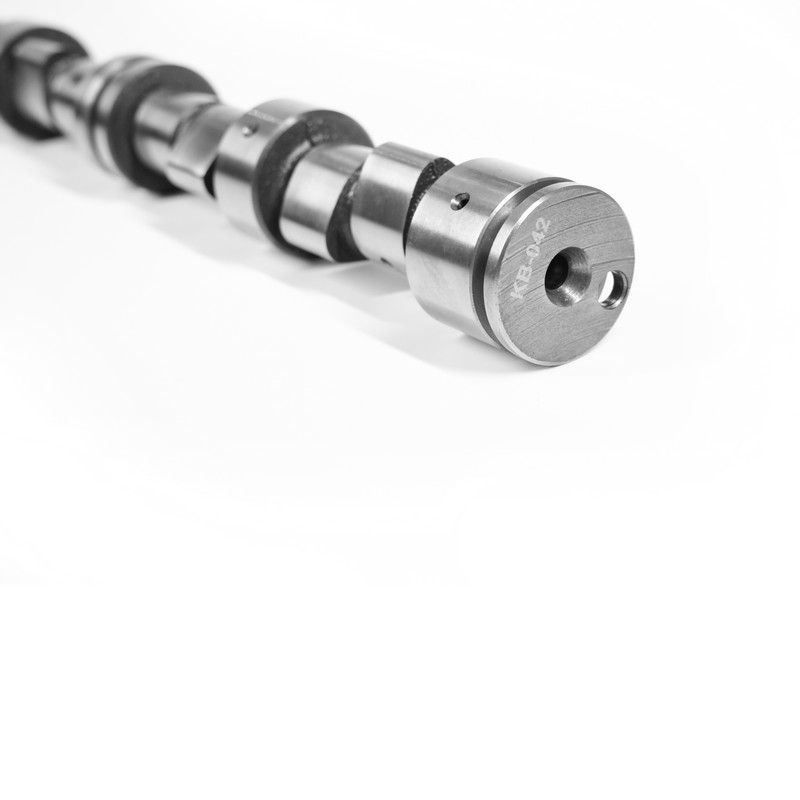The chilled cast iron camshaft stands out in the automotive industry due to its unique manufacturing process and exceptional properties. Unlike conventional cast iron camshafts, the chilled casting process creates a harder, more wear-resistant surface while maintaining a relatively ductile core.

The Chilling Process Explained
The production of a chilled cast iron camshaft involves carefully controlled cooling rates during casting. Metal molds (chills) are placed in strategic locations to rapidly cool specific areas, typically the cam lobes that require maximum hardness. This creates a metallurgical structure with:
- A hardened white iron surface layer (0.5-5mm thick) with excellent wear resistance
- A gray iron core that provides good shock absorption and machinability
- Gradual transition between these zones for structural integrity
Comparative Analysis: Chilled vs. Other Camshaft Types
When comparing chilled cast iron camshafts to alternative materials and manufacturing methods, several key differences emerge:
| Property |
Chilled Cast Iron |
Forged Steel |
Standard Cast Iron |
| Surface Hardness |
500-600 BHN |
300-400 BHN |
200-300 BHN |
| Core Toughness |
Good |
Excellent |
Fair |
| Wear Resistance |
Excellent |
Good |
Average |
| Production Cost |
Moderate |
High |
Low |
| Machinability |
Fair (hard areas) |
Good |
Excellent |
Benefits of Using Chilled Iron for High-Performance Camshafts
The automotive industry increasingly favors chilled iron for high-performance camshafts due to several technical advantages that directly impact engine performance and longevity.
Enhanced Durability Under Stress
The unique microstructure of chilled cast iron provides exceptional resistance to:
- Surface pitting and spalling caused by repetitive valve spring loads
- Abrasive wear from continuous contact with lifters or followers
- Micro-welding and adhesive wear in boundary lubrication conditions
Improved Thermal Characteristics
The chilled casting process creates a material with superior thermal properties compared to standard cast iron:
- Higher thermal conductivity in critical contact areas
- Reduced thermal expansion at operating temperatures
- Better heat dissipation from friction zones
How Chilled Cast Iron Camshaft Manufacturing Process Works
Understanding the chilled cast iron camshaft manufacturing process reveals why these components offer such excellent performance characteristics.
Step-by-Step Production
- Pattern Creation: Precision patterns are made from aluminum or plastic to form the sand mold cavities.
- Mold Preparation: Special sand molds are created with chill inserts positioned at cam lobe locations.
- Metal Pouring: Molten iron at precise temperature (1250-1400°C) is poured into the prepared molds.
- Controlled Cooling: The chills rapidly extract heat from lobe areas while other sections cool slower.
- Heat Treatment: Some applications may require additional tempering or stress relieving.
- Machining: Critical surfaces are ground to final dimensions with special attention to hardened areas.
Quality Control Measures
Manufacturers implement rigorous quality checks throughout the chilled cast iron camshaft manufacturing process:
- Spectroscopic analysis of molten metal composition
- Dimensional verification at all machining stages
- Hardness testing across different zones of the camshaft
- Surface finish measurement of bearing journals and lobes
- Non-destructive testing (magnetic particle or ultrasonic inspection)
Chilled Cast Iron vs Ductile Iron Camshafts: Key Differences
The debate between chilled cast iron vs ductile iron camshafts involves understanding their distinct material properties and performance characteristics.
Material Property Comparison
| Characteristic |
Chilled Cast Iron |
Ductile Iron |
| Tensile Strength |
250-350 MPa |
400-600 MPa |
| Elongation |
0.5-2% |
10-18% |
| Surface Hardness |
500-600 BHN |
200-300 BHN |
| Impact Resistance |
Moderate |
High |
| Wear Resistance |
Excellent |
Good (with treatment) |
Application-Specific Advantages
The choice between these materials depends on specific engine requirements:
- Chilled cast iron excels in high-wear applications with consistent lubrication
- Ductile iron performs better in high-impact or variable load situations
- Chilled iron maintains dimensional stability better at elevated temperatures
- Ductile iron offers better machinability for complex geometries
Maintenance Tips for Long-Lasting Chilled Iron Camshafts
Proper care can significantly extend the service life of your long-lasting chilled iron camshafts. Follow these guidelines to maximize performance and durability.
Proper Break-In Procedures
The initial operation period is critical for chilled iron camshafts:
- Use manufacturer-recommended break-in lubricants
- Maintain proper engine speeds during first hours of operation
- Avoid prolonged idling during break-in
- Monitor oil pressure and temperature closely
Ongoing Maintenance Best Practices
To ensure your long-lasting chilled iron camshafts reach their full potential:
- Use high-quality oils with proper additive packages
- Maintain correct oil change intervals
- Monitor and maintain proper valve train geometry
- Inspect cam lobes periodically for abnormal wear patterns
- Ensure proper engine breathing to prevent oil contamination
Troubleshooting Common Issues
Recognizing early signs of problems can prevent catastrophic failures:
- Pitting or spalling indicates lubrication issues
- Accelerated wear on one side suggests misalignment
- Polished areas may show improper heat treatment
- Scoring typically reveals foreign particle contamination